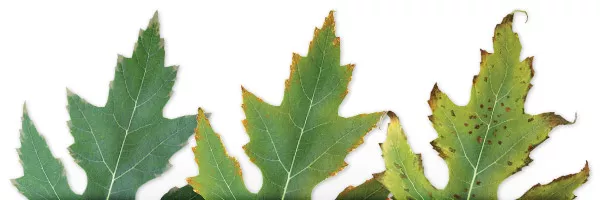Potassium is found throughout the whole plant. it is necessary for all the activities having to do with water transport, the opening and closing of the stomata, and many other things. Potassium takes care of the strength and the quality of the plant, and controls countless other processes such as carbohydrate systems. Higher potassium content in the soil increases the plant cells’ resistance to pathogens. The romans and the Etruscans enriched the soil with potassium by burning the local vegetation. This form of slash-and-burn farming has taken place for centuries over the whole world, with extreme soil erosion as a consequence.

During the thirties, a mixture of wood ash and manure was still used in Western Europe. Potassium is a soft silver-white metal that, in pure form, reacts violently when it comes into contact with air and water. 300 million years ago minerals such as potassium, sodium and magnesium were dissolved into the sea by crust erosion. The sea water in large sea beds evaporated and the salt crystallized and generally covered by more rock leaving salt formations. Until around the turn of the 20th century, only kitchen salt was extracted from these formations. The rest of the potassium was discharged into the rivers or back into the environment. Thanks to the development of inorganic fertilizers, other minerals, such as magnesium, sulfur, phosphorus and boron are now mined besides table salt.
Deficiency

Evaporation from the leaves is reduced, and subsequent water movement through the plant is reduced as well, if there is a shortage of potassium. A consequence of this is that the temperature in the leaves will increase and the cells will burn. This occurs mostly on the edges of the leaves where, normally, evaporation is highest. Temperatures within a leaf can rise dramatically, not only from the ambient air temperatures, but also from the radiation from the sun or light source that a leaf’s tissue collects. An internal temperature above 104°F (40°C) is destructive to the plant because proteins will be broken down. The leaves do cool due to evaporation, but this requires energy. Seventy percent (70%) of the plant’s energy is used by this evaporation process.
It must be noted that dead edges of the leaves can also appear when there is a lack of humidity, or general salt burn. It is impossible to recognize a potassium deficiency just based on these symptoms. In general, one could state that when 10% of an element is missing in the plant’s tissue, the appearance will be visible, and can be recognized by a change of color and/or necroses and other signs.
Development of a deficiency
- In the beginning, you see a healthy-looking, dark green(!) plant with normal glossy leaves. The leaves lose their luster (cuticle thinning) later on.
- The plants often have more branches, but the stalks remain thin.
- The tips of the younger leaves show grey edges; later they turn rust-brown, and curl up and dry out.
- The leaves turn yellow from the edge in the direction of the veins, and rusty-colored dead spots appear in the leaves.
- The tips of the leaves curl up radially, and entire sections of the leaves begin to die out. The leaves keep on curling and ultimately fall off (older leaves)
- An extreme shortage produces meager, unhealthy-looking plants with strongly reduced flowering.
Reasons for a deficiency
- Too little, or the wrong type of fertilizer
- Growing in potassium-fixated soils - Humus and rich clay soils have a strong, mineral- binding working, and buffer especially cations like potassium. Therefore some nutrients are temporarily not available to the plant. Because of the shorter growth period of fast growing plants, this can present problems.
- An excess of 'kitchen salt' (sodium) in the root environment - Sodium slows down potassium intake. Sodium accumulates easily within the root environment, normally more sodium is available than the plant needs. A high sodium level can be caused by poor water quality, salinated soil, the wrong compost or nutrients, and recirculation systems.
Solutions to resolve a deficiency

- Go to your garden shop for expert advice. They have the right products available and a correctly formulated fertilizer contains sufficient potassium.
- In case the EC (electrical conductivity) of the substrate or soil is high, you can rinse it with clean water.
- You can add potassium yourself; the easiest way is inorganic. Dissolve 5-10 grams of potassium nitrate in 10 liters of water. In acidic soils, you can add potassium bicarbonate or potassium hydroxide (5ml in 10 liters of water).
- You can add potassium organically through a water solution of chicken manure or slurry of manure (be careful not to burn the roots) and wood ash (contains several pH-increasing minerals like potassium, (K2CO3) calcium and magnesium. Ash works well as a fertilizer on acid soils). Extracts of the grape family also contain high amounts of potassium.
Recovery
Potassium is absorbed quickly and easily by the plant. In a hydroponic environment,improvement will be visible within several days. In soil, it will depend on the absorption capability of the soil; in which case, it might become necessary to increase the dosage. Potassium supplementation by leaf fertilization is not recommended.
Too much potassium will cause salt damage, calcium and magnesium deficiencies and acidification of the root environment.









